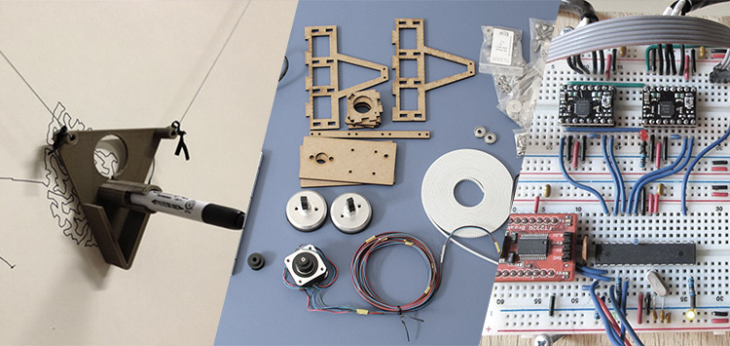IAAC – Master in Robotics and Advanced Construction
Hardware I Seminar
–
Faculty: Angel Muñoz, Irene Raflos, Laura Puigpinós
HARDWARE I
Syllabus
Digital fabrication comprises several technologies, which are used in a wide range of materials. Each technology allows different geometrical possibilities, tolerances, finishing, and more. On the other site, each material (wood, stone, steel, sheet metal, concrete, plastic, etc.) could be manufactured for some of these technologies and has its own performance and requirements.

First day, in the first part of the class, we will be focused on the State of the Art of digital fabrication in industry from CNC routers to robots trough 3d printing or multi axis machines. We will put special attention in materials. We are interested in which technologies are used to manufacturing each material. We also will review some examples of digital fabrication.
In the second part of the class, we will explain in more details the metal sheet fabrication and the ISF technology (incremental sheet forming). In this field, Eurecat has more than 10 years in digital fabrication of sheet metal products for several applications. As an example of the process in industrial digital fabrication, we will see the complete process, from the first CAD design to the GCode including the introduction of a CAM software.
Within the next 2 two days we will see how the advances made in last years in open source hardware and software ecosystem (Arduino, Processing, Linux, Android, OpenCV, etc.) have allowed a fast growing of costly and complex systems with a lower budget and more friendly learning curves.
Aims
Open source movement has unleashed human creativity, having a big impact in production, prototyping and innovation. It has enabled anyone to make IoT devices, drones, robotics and also customization to fit specific contexts.
We will go through a collection of outstanding and inspiring open source projects related to robotics. Moreover, we will see:
> How to use microcontrollers and embedded systems
> How to control different actuators such as motors, relays, electrovalves, and more
> Communication protocols between different devices
At the end of these three days, the students will have a huge collection of hardware tools and content to further research during the first term and to help them with their studio projects.
The seminar participants will spend the rest of the first term working on a project to be defined together with the faculty. The progress will be supervised by the Faculty within scheduled review sessions.
